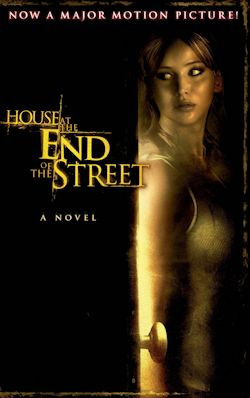Lily Blake’s novel, The House At The End Of The Street, adapted from a screenplay by David Loucka and a story by Jonathan Mostow, offers readers a chilling dive into suspense and young adult horror. For those intrigued by stories where the ordinary suburban veneer cracks to reveal unsettling secrets, this book promises a quick yet engaging read. Having experienced many book-to-movie adaptations, and now delving into a movie-to-novel transition, it’s interesting to explore how this story translates on the page.
As a young adult horror thriller, The House At The End Of The Street leans more into suspense and creepiness rather than graphic gore. This approach makes it accessible to a broader audience while still delivering a disquieting atmosphere. At just under 190 pages, it’s a relatively short book, easily digestible in a single sitting, perfect for an afternoon immersed in a world of subtle scares. The pacing is brisk, maintaining a sense of unease that keeps you subtly hooked, primarily driven by an intriguing twist. While the core premise isn’t entirely novel, it effectively holds your attention, demonstrating that even within familiar horror tropes, there’s room for compelling storytelling. The twist itself, although somewhat predictable to seasoned genre enthusiasts, is well-executed and serves as a significant high point. To avoid spoilers, details must remain vague, but it’s a factor that undeniably elevates the narrative.
However, while the book succeeds in generating suspense, it’s not without its shortcomings. The writing, while functional, lacks the immersive quality that could truly bring the characters and setting to life. It’s evident that the story’s origin lies in a visual medium; the descriptive depth one might expect from a novel feels somewhat muted. It reads almost like a direct transcription of the movie, resulting in a slightly wooden feel. Despite this, the core story’s watchability, even in book form, remains apparent.
 the house at the end of the street
the house at the end of the street
In the realm of genre fiction, The House At The End Of The Street hits its mark as an entertaining read, far from disappointing for what it aims to be. It swiftly captures attention and propels you through the narrative, eager to uncover the unfolding events. While it might not induce nail-biting tension, it maintains a steady level of engagement throughout. The story centers around Sarah and her daughter Elissa, whose relationship strains following Elissa’s father’s departure. Seeking a fresh start and hoping to guide Elissa away from perceived missteps, Sarah relocates them from city life to a quieter small town. They settle into an affordable rental, its low price a stark reminder of the neighboring house where a horrific double murder took place, committed by the residents’ own teenage daughter.
The narrative tension escalates as Elissa encounters the ostracized son from the infamous house next door. Their burgeoning friendship, developing against Sarah’s reservations, thrusts him back into unwanted public scrutiny. This relationship becomes the fulcrum of the story, exploring themes of societal judgment, fear of the unknown, and the complexities of family trauma.
In conclusion, The House At The End Of The Street serves as an enjoyable, light suspenseful read. It evokes the spirit of classic low-budget horror films, relying on atmosphere and character dynamics to generate unease. For readers who appreciate suspenseful narratives without excessive gore and enjoy young adult thrillers with a twist, this book is a solid choice. If you are a fan of movies like Scream or A Nightmare on Elm Street, but prefer a milder horror experience, this book should align with your tastes. Keep your expectations grounded in genre conventions, and you’ll likely find The House At The End Of The Street to be a satisfyingly creepy and entertaining read.

